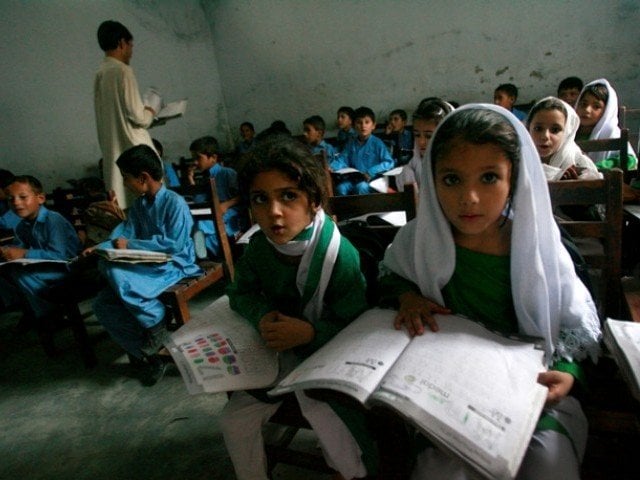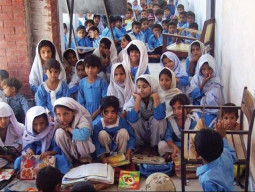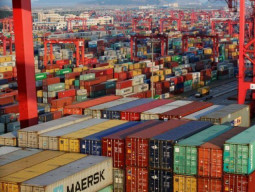
Effusive in its praise for the "tremendous strides" made towards improving service delivery since provinces secured exclusive rights over education, the document has emphasised the provision of high-quality learning opportunities for children as "the most vexing education challenge confronting the province". Stating that the new challenge for the province was to regularise and normalise the technological tools it had developed, the NGO said the tools need not be deployed as examples of success itself, but be used to help generate it.
In the report, Alif Ailaan analysed the performance of the Punjab government in light of the Punjab Education Sector Reform Programme (PESRP). The organisation highlighted gains registered on the formulation of an education strategy under the School Education Reforms Roadmap, and the personal oversight and political ownership of the reforms by prominent provincial leaders. This, according to the report, had "established the gold-standard for Pakistan in sustained, unrelenting and target-oriented focus on service delivery by elected leaders."
Alif Ailaan commends Sindh education reforms, laments 'speed with which they take effect'
Breaking down the assessment into four key categories, Alif Ailaan focused on measuring the impact of PESRP by looking at improvements across government schools, quality of education, availability of accurate and robust data regimes and funds management for the sector.
Sobering challenges
Alif Ailaan revealed that despite having the country’s highest proportion of private schools and private school enrolment, the future of the most vulnerable children in the province continued to be at the mercy of public education. A myriad of problems impeded the development of high-quality government schools in the provinces 36 districts, the NGO stated.
School infrastructure had improved across the province, according to the report. The organisation devised a simple metric to measure improvements in basic facilities across schools in the Punjab with a primary and middle school infrastructure index. The index took into account access to power, boundary walls, availability of water and toilets to assign each school a score.
The percentage of schools with power had risen from 70.9% in 2013 to 89.9% in 2017, the report revealed. On the index itself, Punjab schools scored high nationally with many ranking among the top thirty. The province’s highest-ranked primary school, located in Gujrat, scored 95.78 and stands 8th on the national list.
According to the government’s own statistics, over 7,400 dangerous buildings had been reconstructed since 2013 at a cost of Rs23 billion. Another Rs25 billion have been spent on the provision of missing facilities across 43,000 schools.
In terms of student retention, the total number of children enrolled in primary school jumped from 4.96 million in 2013 to 5.46 million in 2017. More recent data from the provincial government indicated the increase was substantially higher with six million children enrolled in the primary level.
However, Alif Ailaan stated improvements in primary school enrolment had not been matched by an enrolment rise across other schooling tiers. According to the NGO, "the out-of- school children crisis in Punjab may be ending for primary school children, but persists for middle, high, and higher secondary school eligible children".
Provincial govt to continue with education reform project
Compared to other provinces, Punjab had managed to markedly close the gap between male and female enrolment since 2013, the report noted. In total, female enrolment rose from 3.74 million students in 2013 to 4.26 million in 2017.
But the organisation maintained that as primary schools continued to outnumber middle and high schools by a ratio of 5:2, students were forced to travel away from home for access to further education. The report also added that the gender gap ‘became pressing across middle and high schools’.
Revamping standards
In the report, Alif Ailaan termed the provision of high-quality learning opportunities for children as "the most vexing education challenge facing Punjab". Although the children of the province had the best national test scores, the Punjab still faced a "learning crisis", the document noted.
According to data collected by the School Education Department’s Programme Management and Implementation Unit over 2013-17, annual teacher attendance rose from 91.2% to 95.3%. Also, 13 million children in the province were provided free textbooks, and efforts were underway to revamp curriculum content.
The Government of Punjab’s primary mechanism of assessing learning outcomes involved standardised testing through the Punjab Examination Commission at grade 5 and grade 8 level, according to Alif Ailaan. Even though there was considerable scope for improvement, test results had exhibited progress in student performance between 2015 and 2017.
As part of a literacy drive, a short tablet-based assessment was conducted for grade 3 students testing basic learning outcomes. The results from the performance, NGO underlined, were used to provide "remedial material to teachers and students for further guidance". Alif Ailaan cautioned that while data recorded moderate improvements in learning outcomes in the Punjab since 2013, there was still "extensive work" required to improve education standards across both public and private institutions.
Data provision
The organisation praised the Punjab government for pioneering a new model establishing an alternative source of data for education monitoring and evaluation. Since the provision of accurate, robust and timely data was critical to effective policymaking, the NGO lauded the success of data regimes in the province. However, the report also stated that "the challenge for the Punjab now was to regularise and normalise monitoring tools, and deploy them, not as examples of success itself, but tools that can help generate success".
The effort to provide data to policymakers had been enthusiastically taken up by political administrators, Alif Ailaan stated. Regular meetings to monitor progress of short-term targets, conducting a school census, formulating district rankings across schools and the establishment of a student information system had together ensured data provision to planners.
In a historic first, the Punjab government conducted a private school census over 2016-17. The report stated census findings had then been employed to generate a new tool to assess province-wide education standards.
Alif Ailaan noted that while data discrepancies between official circles and independent observers were natural, ideally only official government data should be driving the conversation about education in any province. Independent verification of existing data on a number of education indicators presented a key challenge going forward, the NGO maintained.
Financial management woes
According to Alif Ailaan, increases in the education budget not generating better learning outcomes were increasingly being identified as a risk factor. The report outlined that the Punjab had successfully increased the quantum of allocations to education over the last five years, but "the ability of the province to utilise those budgets, and more importantly, to utilise them in a manner that produces better learning outcomes remains critical".
The period under review saw the Punjab government maintain an upward trend in budgetary allocations for education, Alif Ailaan stated. The total allocation for education was raised from Rs232 billion in 2013-14 to Rs345 billion in 2017-18. A near-doubling in the education sector’s development expenditure allocation from Rs35 billion in 2013 to Rs63 billion in 2017 had "produced positive gains in terms of school infrastructure".
However, the NGO noted that while improvements in physical infrastructure, teacher quality and student enrolment could be attributed to a larger budget, this remained "insufficient to fully address these problems confronting the sector". For example, the manner in which funds were allocated and used highlighted "the persistent public financial management challenge not only in the Punjab, but across the country". According to Alif Ailaan, the challenge lay in utilising the development budget. Over the last five years, while allocations have increased utilisation had decreased. This pointed towards lacunae in official education policy and reforms, the report said.
Policy blind spots
As data in the Alif Ailaan report highlighted, efforts of individuals who had devoted considerable effort towards improving education standards and produced results ought to be recognised. However, the NGO noted that ‘several areas of stagnation, along with slower-than-required progress on others, had also emerged, which meant that a shift in priorities and energies was required’.
On challenges confronting the sector, the organisation has identified policy blind spots and presented suggestions to remedy them.
To correct dismal retention rates in the province, the report counselled the government to focus on "immediate provision of middle and high schools across the province, with particular emphasis on schools for girls". It also stated that "increases in education allocations, disbursements and utilisation have to be accompanied by marked improvements in the efficiency with which funds are spent". In order to devolve some decision making authority to the district and local level, Alif Ailaan said the Punjab must "invest much more effort to deconcentrate, devolve and decentralise its control over how schools are run in the province".
To improve learning outcomes, Alif Ailaan experts advised policymakers to make student achievement levels across public, private, not for profit and religious seminaries "the primary focus of education policy". Stressing the importance of certain subjects, the NGO said, "Learning outcomes in maths and science need to be prioritised."
In order to improve the human resource management of the education system, the School Education Department was urged to "expedite the process of provision of head teachers at public schools across the province". To ensure merit-based teacher recruitment, Alif Ailaan underscored the ‘need for lifelong career planning and management of those recruited’.
Citing recent studies revealing how a significant number of children with special needs in the Punjab continued to be deprived of their right to education, the NGO called on the provincial government to establish "at least one fully-functional school capable of catering to an array of special needs in every union council in the province".
In conclusion, the organisation expressed hope that provincial authorities would strive to bring about more meaning reforms in accordance with assessments highlighted over the report.












































COMMENTS
Comments are moderated and generally will be posted if they are on-topic and not abusive.
For more information, please see our Comments FAQ